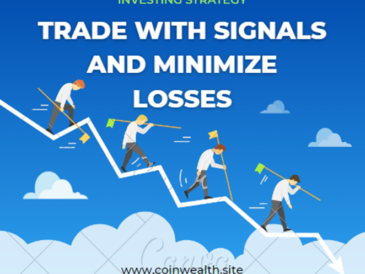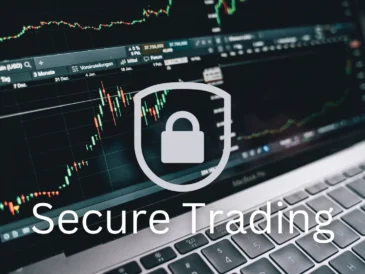Exchange Traded Funds, ETFs have become a major focus for investors. More investors are personalizing their portfolios for diversification, with a vested interest in learning more about ETFs. In the last two decades, ETFs became the fastest-growing asset class, holding about $11 trillion in assets at the end of 2022.
A recent study showed investors’ interest in ETFs grew to 34% from 27% in 2022. ETF allows investors to buy a collection of assets in just one fund and trade them on exchanges as stock. Among other draws, diversification is the major reason investors are ditching other investment vehicles for ETFs. This asset class meets the needs of investors and offers an opportunity to earn high returns on investments.
According to a recent study conducted by Charles Schwab, in 2020, 71 percent of investors chose ETFs over closed-end funds and mutual funds as their preferred investment vehicle. The proportion increased to 80 percent in 2022 and will likely increase to 95 percent in the next two years. This is proof that ETFs will continue to grow in the future. The rapid growth of ETFs is not only limited to those who are already active in ETF investments. A staggering proportion, about 95 percent of current ETF investors say they will buy more ETFs in the future. About 48 percent which represents half of the non-ETF investors say they will consider buying ETFs in the next couple of years.
What Are ETFs And How Do They Work?
An ETF is a fund type of investment just like a mutual fund, it contains assets that may include stocks, bonds, currencies, debts, futures contracts, or commodities. ETFs are similar to mutual funds since they hold a collection of stocks and bonds in a single fund. ETFs are a little bit different because they can be bought and sold on the stock exchange, traded at any time the exchange opens trade and investment can be started at a very low price. ETFs are SEC-registered companies and exchange-traded products that offer investors an opportunity to lump their money in a fund that invests in a collection of assets.
It’s a basket of securities that offers investors a mixture of assets that allows them to personalize and diversify investments. Fee comparison comes top for those interested in ETFs, total cost and low expense ratio are major factors in choosing a fund. ETF total cost is determined by its management fee among other factors like bid-ask spreads and funds premium.
ETFs are cost-effective compared to other open-end funds. It has better tax efficiency, flexible trading, and more transparency.
Why Do Investors Prefer ETFs to Other Investment Vehicles?
ETFs offer greater solutions to investor’s problems. A well-diversified ETF can enable regular investors to do well in the market. Here are major reasons investors may want to consider buying ETFs.
Flexibility in Trading
ETFs are similar to stocks, they can be bought or sold anytime during market hours. Traditional open-end mutual fund shares are traded once a day when the market closes. All trading is done with the mutual fund issuing company, so investors need to wait till the end of the day when the fund’s net asset value (NAV) is announced to know what price was paid for new shares bought that day and the price they would receive for shares sold.
ETF trading happens during the day when the markets open, pricing can be done during normal exchange hours. Share price changes during the day when the market is open depending on the changing intraday value of the underlying asset in the fund. This helps investors to know the price paid for buying shares and how much they received after selling.
Instant trading makes it easier to manage portfolios and move money between various asset classes like bonds, stocks, or commodities. Investors are enabled to get allocation into the investment and change it in a short time. However, this practice is not recommended.
ETF trading flexibility enables investors to make the right investment decisions in placing orders. Investors can limit and stop limit orders due to the ETF trading combinations of investment in common stocks. Shares can be purchased on margin through borrowing from brokers. Investors can also short-sell by borrowing securities from brokerage firms and selling those securities on the market with the hope that prices will fall in the future for investors to buy them back.
Diversification of Portfolio
Risk management or balancing is crucial in every type of investment. Diversification allows investors to manage risk in a way of spreading investment around to limit exposure to one type of asset. Investors may be interested in gaining portfolio exposure to certain sectors or regions but may not be knowledgeable in those areas. ETF shares allow investors access to a wide variety of sectors or countries as well as exposure to certain market segments.
ETFs are traded in almost every asset class, the new structure of the ETF allows an investor to buy or sell stock market volatility or continue investing in high-yielding currencies.
Low Cost
ETFs have lower fees than mutual funds and other funds. All managed funds attract operating expenses, such costs may include custody costs, portfolio management fees, marketing expenses, and administrative expenses. Lower cost singles out an investment to be more viable and profitable.
ETF cost is lower compared to open-end mutual funds. ETF has lower expenses in monthly statements, notifications, and transfers. Traditional open-end fund company expenses can shoot up due to regular monthly statements and reports to shareholders. The case is different for ETFs where such information is only provided to authorized participants. Individual investors can carry out their transactions through stock brokerage firms and take care of all the service costs.
Tax Benefits
ETFs are more tax-efficient by design compared to other traditional mutual funds. They can help investors keep more of their investment returns just because of the way they are built. ETFs have lower capital gains so do not distribute a lot of capital gains. These gains are payable only upon sales of ETFs while mutual funds pay capital gain taxes throughout the investment period. Shares are created and redeemed based on demand in the market shares.
The ETF you hold in a taxable account will generate less tax liability than the same account held in a mutual fund. Reasons for ETF tax efficiency include low turnover because ETFs have their unique mechanism for buying and selling shares. Another reason is that ETF shareholders are insulated from the actions of other shareholders.
The tax situation regarding dividends is different for ETFs. The two kinds of dividends issued by ETFS are qualified and non-qualified. For a dividend to be qualified the ETF needs to be held by an investor at least for 60 days to the dividend payout day. The tax rate for qualified dividends can vary from 5% to 15% depending on the investor’s income tax rate. Unqualified dividends are taxed at an investor’s tax rate.
Investors prefer ETFs as an investment vehicle due to their numerous benefits. This unwavering preference pushed the value of ETFs and similar exchange-traded products (ETPs) to over $7 trillion, exceeding four times the value it was a decade ago. Due to ETF popularity and rapid growth, there is more than ever to choose from.
According to a report by the Investment Company Institute, ICI, the fund industry trade group, there are about 3000 exchange-traded products to choose from in the US indices alone.
The Financial Modeling Prep, FMP, ETF Sector Exposure reveals how to measure how much ETFs apply to a particular sector. It states that investors are likely to invest in an ETF based on the market performance of the sector. For example, if the technology sector has high market performance, investors would prefer to invest in ETFs that have high exposure to technology. The FMP also provides a comprehensive report of the percentage of ETF assets invested in each country, showing that investors would also want to invest in ETFs attached to countries with high growth.
If you are considering investing in exchange-traded funds, you need to be able to choose from the numerous products available in the market today. To make the right choice, you need a genuine platform where there are several investing opportunities and a guide on ETFs.
You can get more information about ETFs and how to go about your investment on Financial Modeling Prep the best platform for every financial data you need.







